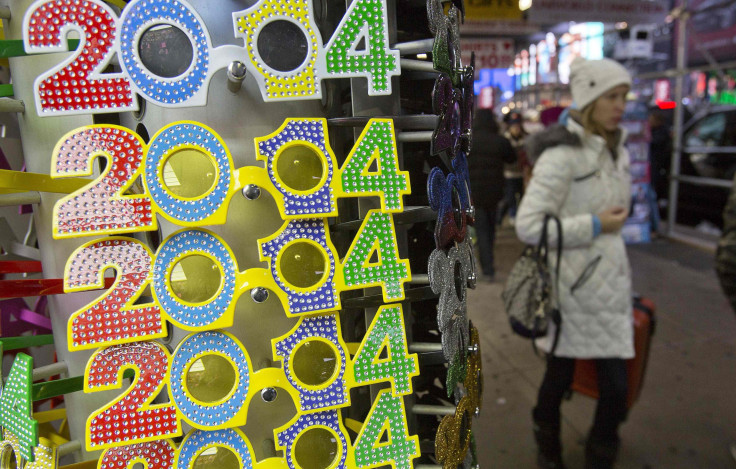AAA 'Tipsy Tow' Program 2014 And MADD Drinking Safety Tips For New Year’s Eve

"Amateur night" is the name many people use for New Year’s Eve, and they are mostly talking about one thing: drinking. “A lot of kids will be here tonight,” says Nancy, my neighbor and a student, who waitresses at a bar in our neighborhood. She rolls her eyes. “Even if they’re legal, they’re still young and don’t know how to drink yet. It tastes good to them so they just pound the cocktails.” While in the bar, she says, they sometimes throw up or bump into other people on their way to the bathroom and what they do once they leave the bar, she can only guess. In all likelihood they will walk drunk — which can be extremely dangerous, even in a parking lot and definitely on a busy street — or drive drunk.
According to Mothers Against Drunk Driving (MADD), the highest percentage of drunk drivers in fatal crashes during 2011 were between the ages of 21 to 24 (32 percent), followed by ages 25 to 34 (30 percent) and 35 to 44 (24 percent). Nancy, then, is only partially correct in assuming that the most harm is done by those who are youngest. Clearly, drunk people of all ages may be the cause of fatalities or less severe accidents on New Year’s Eve — and every other night of the year. Instead of dwelling on disaster, let’s consider instead how to avoid accidents while celebrating a fresh start in 2014.
Tipsy Tow
The American Automobile Association (AAA) has a Tipsy Tow program that will tow you and your car home, for free, on New Year’s Eve. Unfortunately, it’s only available in some states as the map demonstrates, and even in places where it is offered, you might have to wait hours before the truck arrives. AAA also offers “Sober Ride” programs, which are listed state by state, though many of these will cost you. In short, it may not be easy getting home on New Year’s Eve even if you live in an optimal location with free services, so the best advice is to plan ahead and designate a drunk driver as suggested by MADD.
“This year, as you decide who you are going out with, where you are going, and what you are going to wear, make the most important decision — a way to get home safely with a non-drinking designated driver,” MADD National President Jan Withers stated in a press release. “It is the one New Year’s resolution that can save a life.” Why these constant references to MADD, which was created in 1980 by a grieving mother whose child died in a drunk driving accident? Since this nonprofit organization was first founded slightly more than 30 years ago, the number of drunk driving deaths in the United States has been cut in half. In short, they not only care, but their hard work has produced very real results. It would be wise, then, to follow their safety tips (and a few additional notes) while celebrating the New Year.
MADD Safety Tips
- Designate a non-drinking driver before you go out
- Save the number of a local cab company in your phone
- Plan to spend the night, so you don’t have to drive home
- Splurge and get a car service or limousine
- Call a friend, a sister, a brother, or parent. Better to be embarrassed than dead.
- Do not get in a car with someone who has been drinking: DO NOT
- Be a smart host. If someone leaves your home and drives under the influence, you may be liable and held responsible if that driver hurts or kills someone in a collision.
- Don’t provide alcohol to anyone under age 21
- Be responsible. If someone you know is drinking heavily, don't allow that person to get behind the wheel. If you see an impaired driver on the road, contact the police.
These rules are not about punishment, they are about saving lives: your own as well as others. It’s truly not worth the risk to drive drunk on New Year's Eve or any other night. For those who are too embarrassed to ask for help, consider the simplest solution: waiting it out. The average person metabolizes alcohol at the rate of about one drink per hour; in this case a single drink would be defined as 12 ounces of beer (standard bottle), five ounces of wine, or 1.5 ounces of hard liquor. Why not get a measuring cup and pour these out for yourself just to see exactly?
One final reminder: The sober truth is that drunk accidents can happen to any individual, at any age. Although many statistics have been quoted here, the fact remains that you are an individual and anything can happen at any moment. It is as easy to be the victim as well as the cause of an intoxicated driving accident. Do you need some real reinforcement? Listen to this painful confession from a man who killed another in a drunk driving accident and remember to be wary, no matter if you are sober or drunk, when walking or driving this New Year's Eve.
- Fifteen percent of all drivers involved in fatal crashes during the week were drunk, compared to 31 percent on weekends
- More than one in seven weekend, nighttime drivers tested positive for illegal, prescription, or over-the-counter medication. More than one in 10 tested positive for illicit drugs, most commonly marijuana, cocaine, and methamphetamine.
- Ten million people over the age of 12 reported driving under the influence of illicit drugs at least once during the prior year; the rate was highest among adults between 18 and 25.



























